第24章
In the early models the wings were flexible, but in the present craft they are rigid, although fitted with tips or ailerons. The supporting truss beneath the wings, which was such an outstanding feature of its prototype, has been dispensed with, the usual I-beam longitudinals being used in its stead. The latest machines fitted with 100-120 horse-power Mercedes motors have a fine turn of speed, possess an enhanced ascensional effort, and are far simpler to controlOther German machines which are used in the military service are the Gotha and the Albatross. The former is a monoplane, and here again the influence of Etrich upon German aeroplane developments is strongly manifested, the shape of the bird's wing being retained. In the Gotha the truss which Etrich introduced is a prominent characteristic. The Albatross is a biplane, but this craft has proved to be somewhat slow and may be said to be confined to what might be described as the heavier aerial military duties, where great endurance and reliability are essential. As the war proceeds, doubtless Teuton ingenuity will be responsible for the appearance of new types, as well as certain modifications in the detail construction of the existing machines, but there is every indication that the broad lines of Etrich's conception will be retained in all monoplanes.
There is one point in which Germany has excelled. Wood is not employed in the construction of these heavier-than-air craft.
Steel and the lighter tough alloys are exclusively used. In this way the minimum of weight consistent with the maximum of strength policy is carried out. Moreover the manufacture of component parts is facilitated and accelerated to a remarkable degree by the use of metal, while the tasks of fitting and repairing are notably expedited by the practice of standardisation. Germany is also manifesting commendable enterprise in the perfection of light powerful motors for these dynamic machines. The latest types of explosion-motors range from 100 to 150 horse-power; the advantages of these are obvious.
Upon the outbreak of hostilities the French possessed an enormous number and variety of aeroplanes and this aerial fleet had been brought to a high standard of organisation. The aerial fleet is sub-divided into squadrons called "escadrilles," each of which comprises six machines and pilots. These units are kept up to strength, wastage being made up from reserves, so as to maintain the requisite homogeneity.
But ere the war had been in progress many weeks an official order was issued forbidding the employment of the Bleriot, Deperdussin, Nieuport, and R.E.P. monoplanes. Those which received official approval included the Caudron, Henry, and Maurice Farman, Morane-Saulnier, and Voisin machines.
This drastic order came somewhat as a thunderbolt, and the reason for the decree has not been satisfactorily revealed.
Suffice to say that in one stroke the efficiency and numerical strength of the French aerial navy were reduced very appreciably.
For instance, it is stated that there were thirty escadrilles of Bleriot monoplanes together with pilots at the front, in addition to thirty mixed escadrilles of the other prohibited types with their fliers. Moreover a round 33 escadrilles of all the various types were in reserve. The effect of the military order was to reduce the effective strength by no fewer than 558 aeroplanes.
Seeing that the French aerial force was placed at a great disadvantage numerically by this action, there seems to be ample justification for the hostile criticism which the decree of prohibition aroused in certain circles, especially when it is remembered that there was not an equal number of the accepted machines available to take the place of those which had been ruled out of court. One effect of this decree was to throw some 400 expert aviators upon the waiting list for the simple reason that machines were unavailable. Some of the best aviation skill and knowledge which France possesses were affected by the order.
It is stated that accomplished aviators, such as Vedrines, were unable to obtain machines.
It will be seen that the ultimate effect of the French military decree was to reduce the number of types to about four, each of which was allotted a specific duty. But whereas three different bi-planes are on the approved list there is only one monoplane--the Morane-Saulaier. This machine, however, has a great turn of speed, and it is also able to climb at a very fast pace. In these respects it is superior to the crack craft of Germany, so that time after time the latter have refused battle in the skies, and have hurried back to their lines.
The Morane-Saulnier is the French mosquito craft of the air and like the insect, it is avowedly aggressive. In fact, its duties are confined to the work of chasing and bringing down the enemy, for which work its high manoeuvring capacity is excellently adapted. Its aggressive armament comprises a mitrailleuse.
Unfortunately, however, the factory responsible for the production of this machine is at present handicapped by the limitations of its manufacturing plant, which when pushed to the utmost extent cannot turn out more than about ten machines per week. No doubt this deficiency will be remedied as the war proceeds by extension of the works or by allotting orders to other establishments, but at the time of the decree the manufacturing capacity was scarcely sufficient to make good the wastage, which was somewhat heavy.